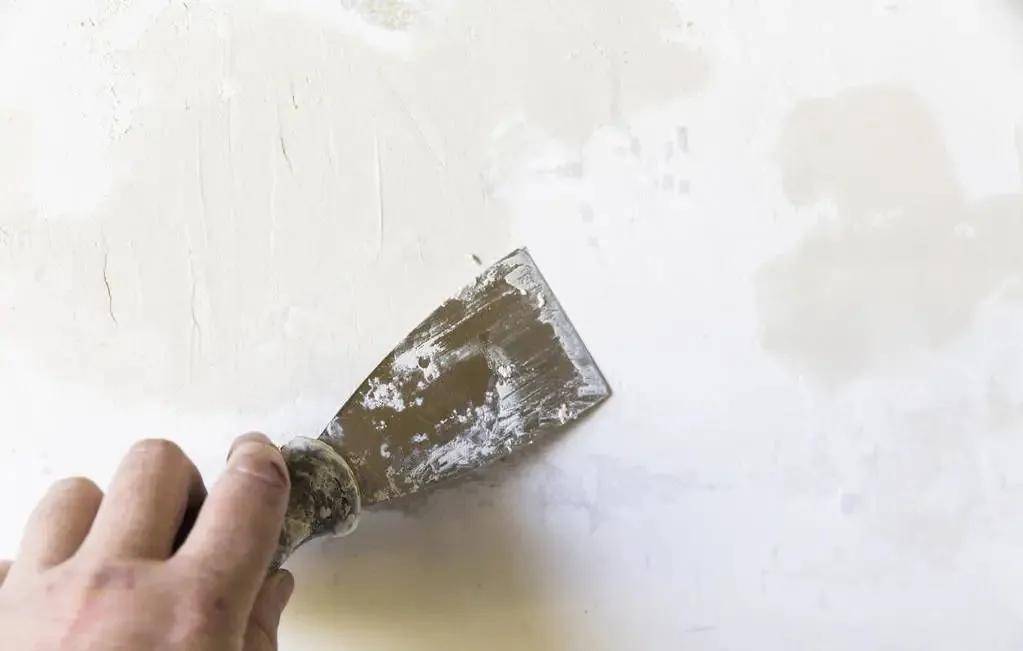Influence of different mortar ratio on crack resistance of plaster
Adjust the initial setting time through the change of retarder, and control the initial setting time at (280 ± 20) min. see Table 4 for the test results.
Performance comparison table of plastering gypsum with different gypsum content
It can be seen in Table 4 that different cement sand ratio has different effects on the flexural strength, compressive strength and bonding strength of plaster gypsum. With the increase of cement sand ratio, the flexural compressive strength of plaster gypsum gradually increases, but the bonding strength shows the opposite change.
The increase of building gypsum content will aggravate the cracking of plastering gypsum, which may lead to hollowing between plastering gypsum and base course, and then weaken the bonding force between plastering gypsum and base course; However, although the flexural and compressive strength test piece also has obvious shrinkage, because the test piece is placed in the steel test mold coated with release oil, it does not form constraints with the steel mold, but the length direction of the test piece becomes shorter, and the test piece does not crack. Therefore, with the increase of gypsum content, the cohesion of the test piece increases, and the overall reflected compressive and flexural strength is improved.
Effect of different mortar ratio on crack resistance of plaster
With the increase of gypsum content, the cracking performance is gradually obvious. Cracks from none to many, crack length from none to through the entire interface, and crack width from none to thick. The amount of building gypsum in plastering gypsum increases, the water consumption of standard consistency increases, and the plastic shrinkage of plastering gypsum powder itself is also greater. In the hydration process of building gypsum, although the solid volume increases gradually, the total volume of the slurry decreases. The plastic shrinkage of plastering gypsum is related to the amount of building gypsum and water in plastering gypsum. The building gypsum reacts with water to produce dihydrate gypsum, forming crisscross crystals and producing strength.
According to the stoichiometric reaction, the volume of reactant is 55 55 +27=82. 55 cm3, volume of product: 74 78 cm3, so the volume is reduced: 74.78 - 82 55=-7.77 cm3 volume change rate: -7.77/82.55=-9.4%. From the calculation point of view, even if the reaction is completely based on the chemical equation, the volume of the reactant is reduced. Therefore, the more building gypsum in plastering gypsum, the greater the total volume change, and the easier it is to crack. And the building gypsum is often said to be a micro expansive material, mainly because only the solid volume is calculated.
The volume of hemihydrate gypsum is 55 55 cm3. After complete hydration, the volume of dihydrate gypsum is 74.78 cm3, so the volume increase is 74.78 - 55 55= 19 . 23 cm3 volume change rate: 19 23/55. 55=34.6%. From the calculation, the building gypsum is completely hydrated and converted into dihydrate gypsum, with a volume increase rate of 34 6%。
Sand itself is an inert material with good volume stability. By increasing the proportion of sand, it is easier to form effective support between sands, preventing the plastic shrinkage of gypsum slurry due to water loss, so as to play an effective role in crack resistance.

Contact: Mr Zhou
Phone: 86-13833456715
Tel: 0311-84311301
Email: jingjinjixie@sina.com
Add: East Fan Zhuang Village Jinzhou Town jinzhou City,Shijiazhuang,Hebei, China